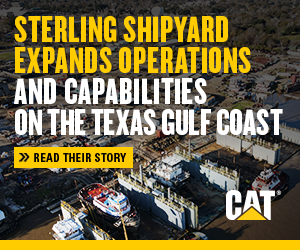Colombian Port of Barranquilla Gets Emergency Dredging
BY LEO SIQUIERA
The access channel of Colombia’s Port of Barranquilla located in the city of same name in the state of Atlantico had to undergo emergency dredging in late April. Jan De Nul’s Colombian subsidiary EDC removed 343000 cubic meters (abour 448600 cubic yards) of sediment at the port’s access channel on concern the siltation could halt navigation.
Depths near the port’s access channel reached critical levels once again forcing Colombian river management authority Cormagdalena to perform emergency dredging in several sections of the navigable channel that gives access to the busy port.
The move was announced in late April following the termination of a contract by Cormagdalena with Navelena a consortium made up of Brazilian company Odebrecht and the Colombian government Valorcon hired to dredge the local Magdalena River including the access channels of the Port of Barranquilla.
Cormagdalena’s decision to hire Jan De Nul in April 20 to quickly restore depths at certain critical areas of the Magdalena River including the port’s access channel came as a result of recurring issues affecting “the regular functioning of the port” according to the river management authority’s decision.
In November 2016 the access channel of Colombia’s Port of Barranquilla reached 10 meters (about 33 feet) raising concerns about its navigability. At the time a sediment accumulation at the kilometer 11 brought its depth to 10 meters as opposed to the 11.43-meter (37.5- foot) minimum depth it should have in the same area.
“The Port of Barranquilla was restricted due to poor meteorological conditions which caused strong surges and wasn’t allowing pilots to embark and disembark off their vessels” Cormagdalena said while explaining the reasons the port has been negatively impacted.
Cormagdalena also cited a “growing decrease” in the depths of the navigable channel of the port between the kilometers -2 and 23 a “considerable” speed loss for vessels with a 9.1-meter draft needing to pass through the X3 section and Navelena’s repeated failure to meet contracted depths and widths of the navigable channel since November 2016.
Navelena’s Unachieved Depths and Widths from early November to late February 2017.
Cormagdalena said the termination of the contract it had with Navelena “compromised” the navigability of the Magdalena River due to lack of dredging and periodical monitoring in the access channel sections of the Port of Barranquilla.
The situation led to a “serious inconvenience” that could ultimately have resulted in a halt of the local fluvial transport a circumstance that would “negatively impact the economy of the Barranquilla district” it argued.
“We therefore declare the urgent need to hire priority dredging works of the navigable channels of the Port of Barranquilla with the aim to restore operating navigation levels at the Magdalena River” the Colombian authority said in its decision which was signed by the authority’s executive director Luis Fernando Andrade Moreno.
PROVISIONAL EMERGENCY DREDGING
As a result of the port’s urgent need Cormagdalena had to skip a few official bureaucratic steps by quickly contracting emergency dredging to keep the port operational.
The local river management authority awarded the project to Jan De Nul’s Colombian subsidiary EDC which surpassed competitors Van Oord Dredging International and Boskalis.
Cormagdalena said the provisional emergency dredging project carried out by EDC was successfully completed on May 10.
The company used its trailing suction hopper dredge (TSHD) Pedro Álvarez de Cabral to remove 343000 cubic meters of sediments in 61 cycles in the three sections of the river and port’s access channels.
“We’re doing our part with Barranquilla. With this dredging project we keep the (access) channel with a depth of 12.19 meters since the kilometer 0 until the kilometer 2. In the rest of it we have a depth of 11.43 meters.” Moreno said in Cormagdalena’s approval documents for the emergency dredging. He did not respond to additional questions from IDR.
Cormagdalena paid COP 6 billion ($2.08 million USD) to perform the emergency dredging project which guarantees at least for a while the needed depths for the entrance and exit of vessels in the area.
Colombia’s National Institute of Roads (INVIAS) has already opened a tendering for maintenance dredging at the Magdalena River for the remainder of 2017 under the tendering No. LP-DO-SMF-031-2017.
The contract should be awarded in late June.
PERMANENT DREDGING NEEDED
Despite the provisional solution found by Cormagdalena for the Port of Barranquilla the governor of the state of Barranquila Eduardo Verano De La Rosa thinks a permanent dredging at the local port is needed in order to keep its competitiveness.
“The decision we have to make is about a dredging service versus having a dredge here” he told Colombian media Caracol.
According to the governor the Port of Barranquilla needs dredges like Jan De Nul’s Pedro Álvarez de Cabral for a specific period of time to guarantee according to his estimates dredging for at least four times a year.



